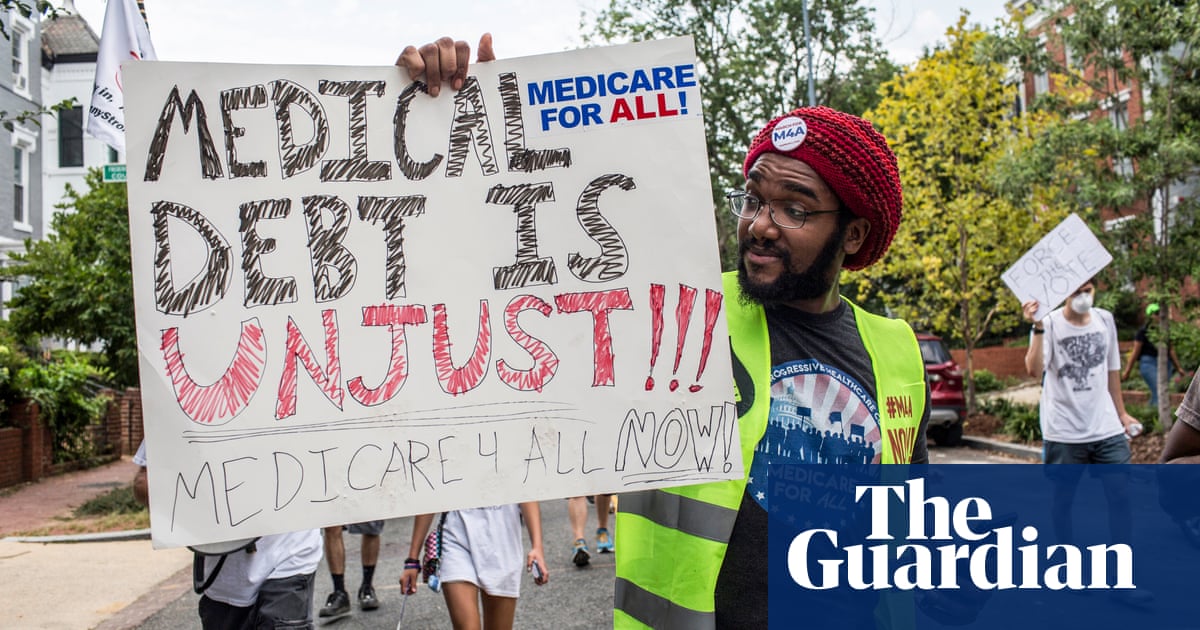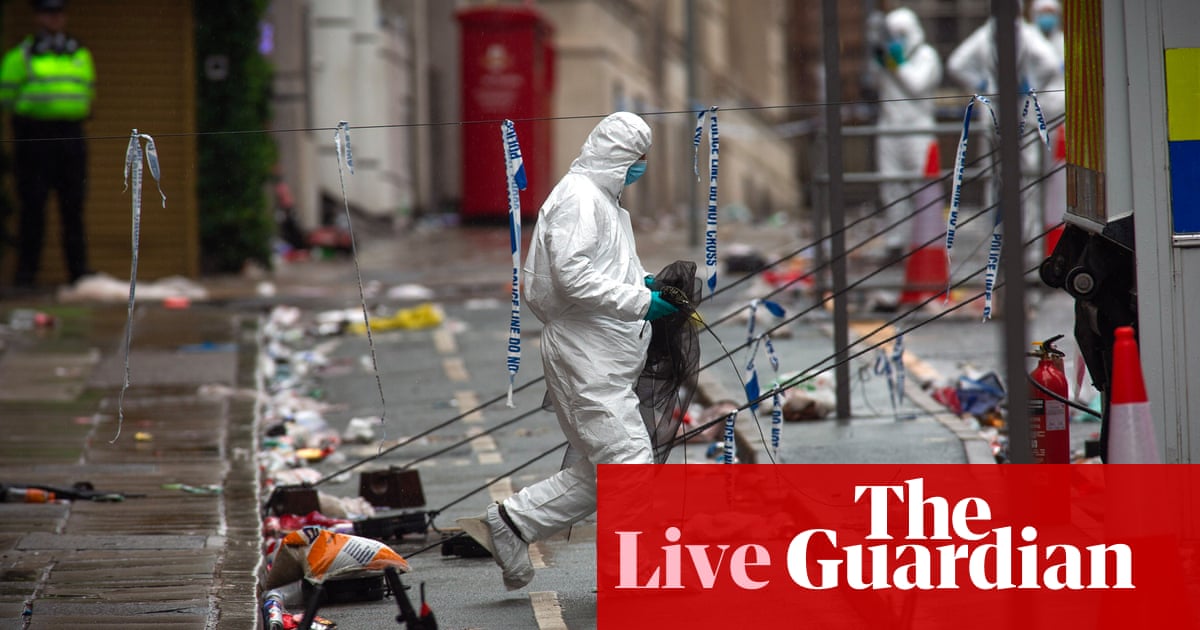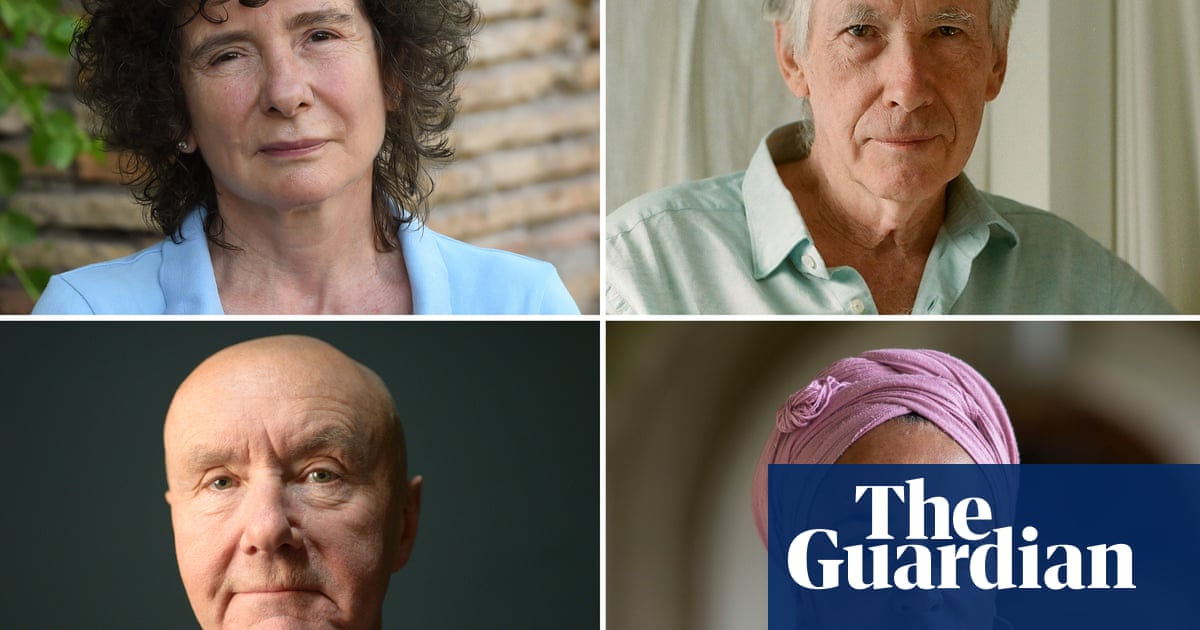After her husband of 44 years died two years ago from Covid-19-related respiratory complications, Susan thought she could begin to grieve the loss of her best friend.
The cost of the medical care her husband incurred before he died, she was told, was not something she had to think about.
“Medicaid paid everything off. Everything was good,” the resident of Springfield, Ohio, who asked not to be fully identified due to her outstanding legal matters, says.
Then her attorney called her to say the Medicaid bill needed to be paid.
“I said: ‘What Medicaid bill? The hospital bill has been paid.’ The attorney said: ‘No, you have to pay it back to the state.’”
The hospital had previously shown her a printout of the bill having been paid in full.
“I’ve been in limbo for two years. It has been a burden. I lose sleep over it,” she says. “Every time I try to do something it’s like running into a brick wall.”
About 100 million Americans owe an estimated $220bn in medical debt, with many dragging those financial obligations around for decades. Millions of low-income Americans have been trapped by medical debt that has prevented them from owning a car or house, keeping them and their spouses and children in poverty for generations.
But in south-west Ohio, local activists and medical centers are teaming up with Undue Medical Debt, a Boston-based non-profit formerly called RIP Medical Debt, on an ambitious effort to raise funding to settle longstanding medical bills for thousands of locals.
In a region with some of the highest medical debt rates in the country, about 13,000 people who owe more than $22m are eligible for debt relief, which can be bought from debt collecting agencies at a knockdown rate of $1 for $178 of debt.
“It’s a very troubling story when you hear patients who defer care because they are worried about the cost of healthcare. People fall through the cracks; they are in insurance doughnut holes, their insurers deny their prior authorizations that were approved,” says Ben Merick of Bon Secours Mercy Health in Springfield, Ohio, one of the entities helping with the campaign.
“Our hope is for a reset. Our goal is to raise money in Clark county to clear this debt, which is a pretty substantial amount of money per capita in our county.”
Undue Medical Debt does not take requests or unburdens debt from individuals; rather it acquires “bundled portfolios” of debt whose owners are willing to sell. In theory, Susan’s debt could be eliminated by a $264 donation.
Medical debt is the leading cause of bankruptcy in the US even as many other developed and developing countries provide universal healthcare in one guise or another to residents.
In 2020, Ohioans paid more per capita for healthcare than residents in California, Washington state and Texas, despite income levels in the latter states being far higher.
For the plan to work, the project, led by a local non-profit called the Collaboratory, needs over $127,000 in donations.
“Clark county accounted for 40% of the region’s medical debt, even though it is a low-population area. Rural counties tend to have higher per capita medical debt just because of a lack of access to jobs and health insurance,” says Peter Benkendorf of the Collaboratory.
after newsletter promotion
“But there’s 13,000 people in the region that are going to benefit. Hopefully those resources can be invested in education or making sure there’s food on the table, or on rent.”
So far, the effort has raised enough donations to buy out about $400,000 of debt, meaning the effort has a long way to go.
It’s not the first time that efforts have emerged to attack medical debt. Dozens of cities across the country used funding from the 2021 American Rescue Plan Act to buy the medical debt of low-income residents. City authorities are increasingly buying residents’ medical debt on a wholesale level in an effort to support entire communities.
All the while, some experts say medical debt in America has reached “epidemic” proportions, despite over 90% of people having some level of medical insurance.
One report suggests that paying off people’s medical burden has provided little positive influence on their lives, though recent efforts have been unveiled to buy up debt across towns or cities in an effort to benefit entire communities.
Today, Susan is one of about 3 million Americans with more than $10,000 in medical debt and finds herself at an impasse. She can’t pay her husband’s medical expenses until his estate is settled, which would include having to sell her home of 40 years, something she is loth to do. But the estate can’t be settled until his bills are paid first.
“They told me I have to pay all these bills first and then they’ll transfer the [property] deed to you. But this is all I have; this is where I live,” she says.
She says that once the state of Ohio found out that her husband owned a mortgaged home, it enacted its Medicaid estate recovery process, as required by federal law, but which is one of the most aggressive in the country, to put a lien on her home.
What’s more, Medicaid estate recovery in Ohio is only legal after the death of both the recipient – after they reach 55 years of age – and their spouse, further mystifying Susan. Ohio lawmakers are looking at introducing a law that would require the state to present clear notifications of repayment requirements as part of any Medicaid application.
She says she called Medicaid, which referred her to an attorney and to the Ohio attorney general, whom she called but was not available. Then she approached a bank and a financial company to try to get a second mortgage on her home.
“No one will give me a loan. But I’m still left wondering why I have to pay this off,” she says.










